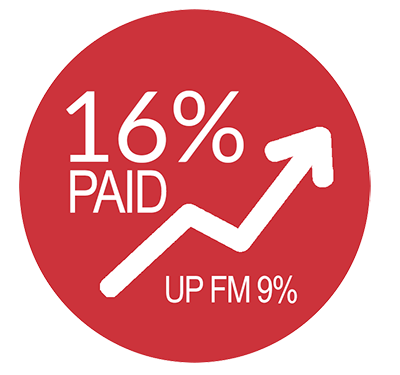 There’s been a lot of talk this year about paid digital content as a viable revenue stream for news media. We certainly see evidence of the publishers that are getting paid content right. The shift away from ad-supported content to paid content models is gaining momentum. Witness the New York Times’ focus on subscriptions and what that means for publishers. The once heavily ad-based publishing business model is starting to be driven more by subscription goals.
There’s been a lot of talk this year about paid digital content as a viable revenue stream for news media. We certainly see evidence of the publishers that are getting paid content right. The shift away from ad-supported content to paid content models is gaining momentum. Witness the New York Times’ focus on subscriptions and what that means for publishers. The once heavily ad-based publishing business model is starting to be driven more by subscription goals.
Still, there are those who would caution media brands.
“Publishers are pivoting hard to subscriptions. In the past few months alone, publishers including CNN, The Atlantic and Wired have made moves to put up online paywalls,” writes Lucia Moses in Digiday. “In a Reuters Institute survey of 194 global publishing execs, digital subscriptions were listed as the most important revenue stream in 2018, by 44 percent. With almost all digital ad revenue growth going to the tech giants and Facebook choking off the news feed for publishers, it’s no wonder publishers are looking hard at reader revenue.”
She cautions that “wishing for something doesn’t necessarily make it so.” Moses quotes Vivian Schiller, former Times and NPR exec, as saying “I’m afraid for most new publishers, it’s going to end in tears.”
The challenge stems from the vast majority of people who still believe that content on the internet needs to be free.
“A 2017 Reuters Institute survey found 16 percent in the U.S. paid for online news in 2017, up from 9 percent in 2016,” Moses reports. “That sounds impressive, but 79 percent still said it was ‘somewhat or very unlikely’ that they’d pay for online news in the future. And those who will pay are most likely to pay for news reporting, less so lifestyle and entertainment news.”
There is no easy fix to this problem; like any industry in a state of evolution, innovation is critical and change is often slow. But publishers who have adopted an audience-first mindset are the most likely to make paid content work.
“This is a big shift, and it takes a new way of thinking and executing,” said Michael Silberman, SVP of Piano Media. “It’s this shift not only from attention to engagement and from a content-centric point of view to a customer-centric point of view. And then applying your intelligence about that customer to create an editorial product that’ll really be appealing to them. I think we’re in the very early days of being able to go down that path.”
We see positive factors playing into this, including the news that young subscribers are flocking to paid content. Born and raised on questionable quality “free” content, they are searching for something better. Some publishers are ramping up the creativity in their subscription sales strategies, while brands like GQ are fully embracing their reader-centric multi-channel revenue stream.
Yes, the right amount of caution is a good thing in business. And we wonder how things would look today if publishers had exercised the same kind of caution before diving into digital advertising as their breakthrough stream. We are seeing it turn back now, as publishers wisely look to their readers to help define the direction for the next evolution.
